
You have seen it everywhere and heard a lot of gardeners talk about benefits of Mulching. But what exactly is mulch? According to Chicago Botanic Garden (Published in Plant Information Fact Sheet – Mulch) Mulching is an essential cultural technique that reduces the amount of work inherent in gardening, helping to produce healthier plants and potentially increasing vegetable yields. Mulch is often defined as any material applied to the soil surface as cover. Mulch is a substance such as wooden bark, dead leaves or compost that is spread around the plants to nourish the soil, prevent soil erosion and control weed growth. It can do wonders for your garden if you use it properly.

While it might seem like a rather daunting task, it sure is worth all your efforts when you get to reap healthier vegetables and fruits from your garden.
While most mulch performs equally well, a few cater to the needs of certain plants or crops. This is why it is crucial to find the right kind of mulch for your garden along with other important details.
Different Types of Mulch for your Garden
There are two major categories of mulching, organic and inorganic. Organic mulching includes straw, chopped leaves, hay, grass clippings, wood chips, compost sawdust and more. Inorganic mulches include geotextiles, black plastic or mineral mulching.
You would need to choose one that is best suited to your soil or the kind of plant you are hoping to grow. But, to do that, you need to be aware of all the pros and cons of each type.
So, let’s get started.
Organic Mulching
Organic mulching is preferred over mineral mulching as other than protecting the soil, it fertilizes the soil when it breaks down. There’s a plethora of options when it comes to organic mulching, each one unique in its own way. Mentioned below are a few of them:
01. Wood Clippings for Mulching

For this method, hardwood or barks can be used. Hardwood used for the purpose of mulching is made up of refuse from old wooden items or refuse from a tree trimming job. Bark mulch on the other hand, as the name implies is procured from the bark of trees. According to Ranjan, et.al. (Published in Organic Mulching – A Water Saving Technique to Increase the Production of Fruits and Vegetables), bark mulch must be applied to a depth of 2 – 4 inches.
These are the barks which have been harvested from firs and pines. Wood clippings work great as mulch as they don’t allow the water to evaporate quickly, thereby retaining moisture for a longer period.
These look best in shrub borders, flower beds and garden pathways. However, these aren’t preferred for annual flower or vegetables beds. This is because they can be bit of a hassle to get out of the way as you dig up the beds each year or season.
It’s also important to remember that bark mulch will last longer than hardwood mulch. Hardwood mulch tends to turn grey overtime and would have to be raked and turned. It also attracts termites which is bad for your plants.
02. Grass Clippings for Mulching
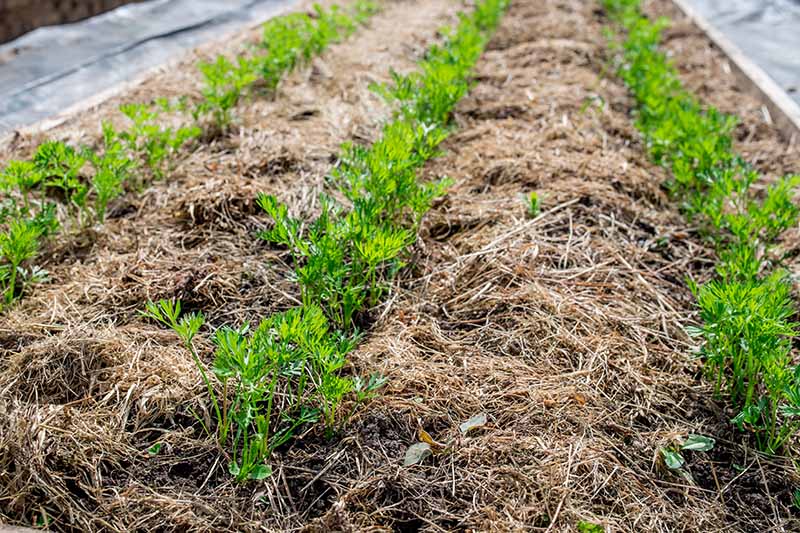
Mulching with grass clippings has been a time-tested method that can preserve the moisture, enhances the fertility of the soil and prevent the growth of weeds. Dried or fresh grass trimmings are collected and laid down in the flower or vegetable bed. It is very easily available mulching material in agriculture. According to Ranjan, et.al. (Published in Organic Mulching – A Water Saving Technique to Increase the Production of Fruits and Vegetables), dried grass mulch must be applied to a depth of 2 – 3 inches
It is important to note here that clippings less than an inch will breakdown quickly. Longer clippings on the other hand, stay on the surface as they take much longer to compost.
When using fresh grass clippings, lay down a very thin layer on the soil, about ¼ inch. This will help the grass to breakdown easily without rotting. Thick layers can remain too wet and encourage the growth of mould. Dried clippings on the other hand can be laid down in a thick layer and work as excellent mulch for vegetable crops.
Expert Tip: Grass clippings can be mixed up with the soil to add nitrogen to it. To maintain the balance, add two parts of carbon releasing substances including sawdust, dry leaves or shredded newspaper to one-part grass clippings. This will help the soil aerate to prevent excess moisture, provide sufficient oxygen to the bacteria and compliment the nitrogen.
03. Hay or Straw Mulch

Consider using salt hay, weed-free hay or straw as mulch for your vegetable garden. This kind of mulch prevents weeds, retains moisture and acts as a nourishing element for the soil after it breaking down.
Added to that is the fact that it makes your vegetable bed look crisp and clean. Just make sure that you avoid piling it around the fruit tree trunks or the vegetable stems to avert any rodent or slug damage.
According to Ranjan, et.al. (Published in Organic Mulching – A Water Saving Technique to Increase the Production of Fruits and Vegetables), straw mulch must be applied to a depth of 6 – 8 inches. It is used as winter protection and as a summer mulch in vegetable fields. These mulches provide great insulation and water penetration. It is generally avoided in high traffic areas.
04. Compost as a Mulch
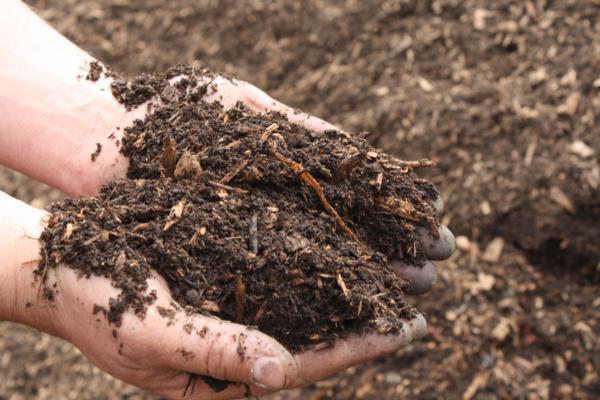
If you have some extra compost to spare, you could consider using it as mulch. It will improve the quality of soil and make your plants happy. However, lay down a very thin layer of compost around your plants as dry mulch can make the roots of the plants unhappy.
To solve this problem, you could add another layer of mulch like chopped up leaves on top of the compost. This will help the compost remain biologically active and moist thereby offering maximum benefits to your flowers, fruits or vegetables.
Inorganic Mulching
Inorganic mulching neither improve the soil nor are environment friendly, but that doesn’t mean that they aren’t a smart choice for your garden.
01. Mineral Mulching
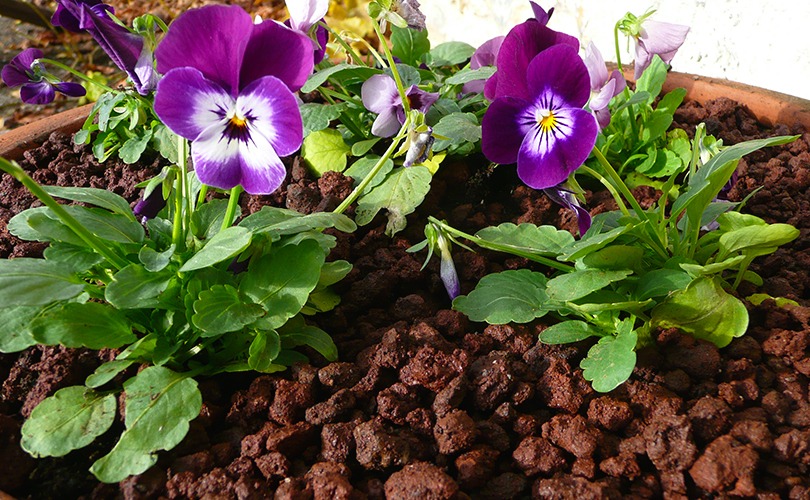
Mineral mulching isn’t a biodegradable option and its use is only recommended for plants that are acclimated to dry and warmer climates. There are several varieties of these including gravel, flat stones or crushed tiles. Pozzolan remains the most widely used mineral mulch. It is a volcanic rock rich in silicone known for being extremely ornamental and for its longevity.
02. Mulching with Landscape Fabrics
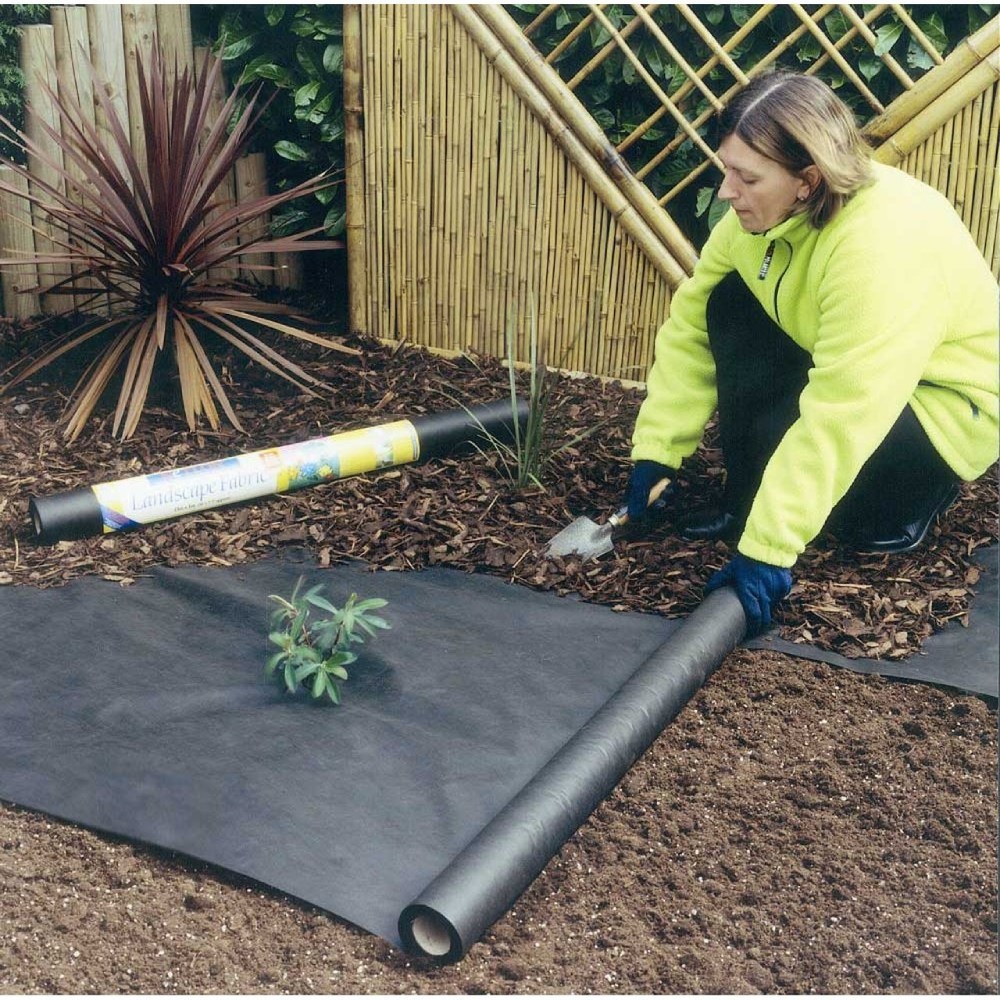
Landscape fabrics or geotextiles allow water and air to penetrate through the soil while preventing the growth of weeds. While there may be several benefits, there are a few drawbacks as well. Geotextiles tend to degrade gradually when exposed to light.
In order to ensure that they last for a long time, you might want to consider topping it up with a layer of torn-up leaves or wood bits. Also, it would be wise to keep the landscape fabric away from shrubs. The shrub roots grow up into the fabric, meaning you will have to tear the geotextile upon removal.
03. Plastic Mulching
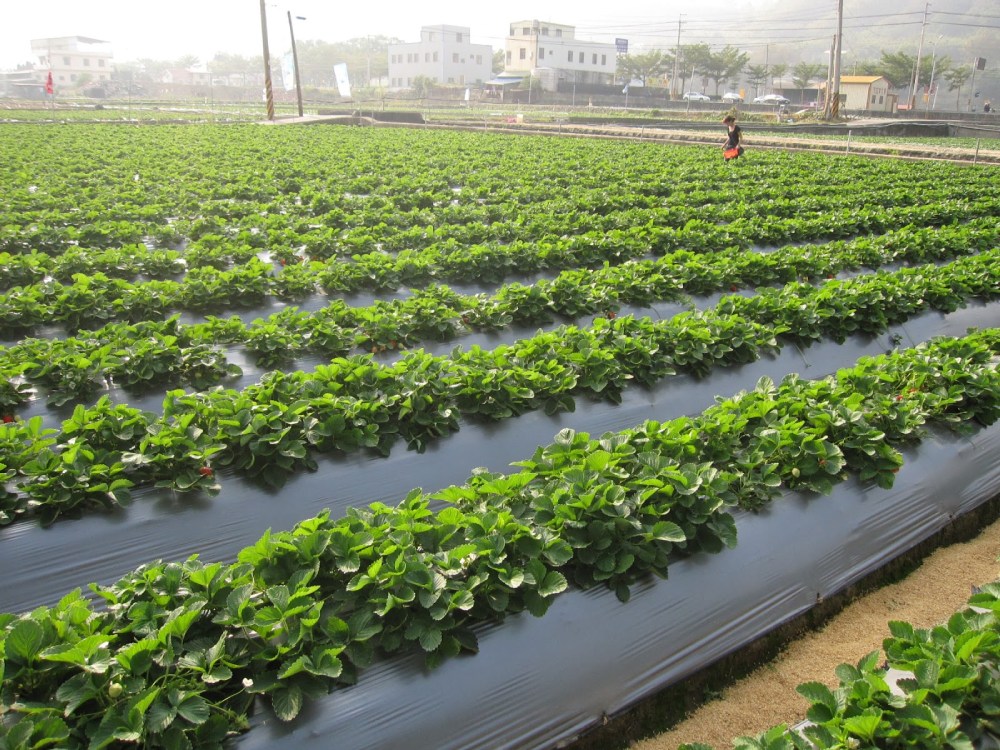
Other than all the organic options available, there’s also plastic mulching. All you need for this is black plastic film sheets. In a raised garden bed, spread it over the soil surface tightly and bury the edges or weigh it down with a few rocks. Punch holes in it with a planter and put in your plant or seeds.
The biggest advantage of using black plastic sheets is the fact that it transmits the heat of the sun to the soil below. This creates a microclimate nearly three degrees warmer than a garden that’s not mulched.
However, plastic mulching can’t be used for shrubs as it can negatively impact the long-terms health of the plants. With air and water not being able to penetrate through the plastic, the roots grow close to the surface of the soil. The roots don’t get enough oxygen or moisture and if not taken care of, can die. This should be used with caution and care.
How Much Mulch should be Used?
According to Debalina Saha, Brian Pearson,et.al. (Published in Mulch Type and Depth, Herbicide Formulation, and Post application Irrigation Volume Influence on Control of Common Landscape Weed Species), if you are using a fine mulch, about one to two-inch layer should be sufficient while coarser mulch should be at least three to four inches deep. Mulch applied at 2 inched depth is often used as a standard mulch depth in landscape industry. If you do want to add more, limit yourself to six inches. With mulching, more isn’t always better. Too much can suffocate your plants instead of doing any good for them. Lay a thick layer of mulch only where you wish to prevent anything from growing at all.
How to Mulch Properly?
When it comes to using mulch to combat the problem of weeds, there are two cardinal rules. First, the mulch should be laid on an already weeded soil and second, laying down a thick layer of mulch to discourage the growth of new weeds through it.
Experts advise on laying a two-inch layer of mulch for shaded areas while a four-inch layer of mulch should be laid down in areas that receive direct sunlight. In case your garden bed is filled with perennial seeds or weed seeds, a double-mulching technique could be beneficial in averting a weed explosion.
Begin by placing your plants in place, water them and then spread newspaper all around it. Top the newspaper with mulch and you are done. Mulches like wood chips and straws are known for retaining moisture and can prevent the soil from getting too warm.
It is however important to pull out the mulch in spring from the bulbs and perennials to promote growth. Wet mulch piled against your plants can cause much harm than any benefit. Remember to keep the mulch at least an inch away from stems and crown to prevent rot.
Benefits of Mulching

When done correctly, mulching will offer several advantages to enhance the growth of your plants and facilitate the management of your flower of vegetable garden.
- Reduced Weeding: When you cover your soil with a fine layer of mulch, you would be able to prevent excessive and rapid spread of weeds.
- Less Watering: Soil devoid of any kind of protection expedites the process of water evaporation and transpiration of plants. Proper mulching limits these phenomena and acts as an absorbent for better water absorption of water. The mulch also covers the soil, keeping it fresh and preventing it from drying out especially during the hot summer months.
- Improves Soil Fertility: When the mulch begins to decompose, it transforms into humus and improves the fertility of the soil with essential nutrients. These nutrients promote the growth of vegetables and fruits.
- Impedes the Slaking Phenomenon: After a while, limestone and clay soil tend to become condensed and form a crust especially after heavy rain. This can easily be avoided by mulching the soil.
- Enhances the life of your Soil: Mulching adds a protective layer to your soil thereby safeguarding it from humidity and temperature discrepancies. This helps the microbes at the surface to develop and encourages the release of necessary nutrients for the growth of plants.
- Less Muddy Crops: When climbers like cucumbers, strawberries or melons are in direct contact with the soil, they tend to get muddy. Mulching will prevent your produce to be in direct contact with the soil.
- Decreases the Chances of Illness: Mulching acts as a physical barrier and helps decrease the risk of illness spreading to the plants during the rainy season. This has proved to be really beneficial in the case of mildew spores that could potentially cause harm to the twigs and leaves close to the soil.
Why Mulch? Where? When?
Rather than finding out reasons for mulching, I would be a lot more interested in finding out why somebody wouldn’t want to mulch. As mentioned above, the advantages of mulching are truly extensive, ranging from promoting healthier soil with better plant development to having to water less frequently.
Whether you wish to make your neighbours jealous with your excellent yard upkeep techniques or want to have a better harvest, mulching is the way to go.
The right time to mulch a garden is dependent on a number of factors including the weather conditions and the kind of plant material you are mulching. Generally, mid to late spring is the ideal mulching season when the soil recovers from the freezing cold.
With innumerable varieties available, finding the ideal solution that fits your needs shouldn’t be very difficult. While a lot of them do have similar properties, each one of them is unique in its own way. You could decide to do it all yourself by bringing out that DIY expert within yourself or you could be conscious of the environment and pick alternatives that don’t harm the nature.
Why Not Mulch?
The benefits of mulching outweigh any reason to not mulch. The downsides, though not as apparent as the advantages, are worth considering. Mulch acts as an excellent home for bugs and if not taken care of, can soon start munching on your plants.
Mulches can help retain heat but a few can keep it from getting too deep in the soil. This can be both an advantage and a disadvantage. While flowers will be prevented from blooming early, they can also be forced to bloom later than usual, not something that you would want.
Mulch’s moisture-retaining properties can also be a drawback. While keeping the soil moist is a good thing, plants don’t enjoy too much water and soon it can cause serious issues. If excess water in the soil doesn’t evaporate, it can lead to rotting of the plant’s root. Also, this will encourage growth of fungus.
Lastly, there’s the problem of light blocking. Mulching might be great for stopping the weeds to grow, but wouldn’t be favourable if you are hoping to plant something new. Seeds need proper sunlight to germinate and mulch can stop the light to get down to the soil. With no germination, there would no new plant and all your efforts would be futile.
FAQ’s
Q 1. How do I Prep for Mulching?
Prepping for mulching is pretty straightforward. You will have to:
- Get rid of the weeds
- Trim unwanted bushes and trees
- Clear the area by raking the bed
- Turn the soil and edge the bed
- Smooth out the soil
- Start mulching
Q 2. Is it Okay to Mulch Around Flowers?
Mulch retains the moisture of the soil and helps moderate its temperature which in turn leads to happy plants. Adding a thin layer of mulch in your flower bed will suppress the growth of weeds and improve its appearance.
Q 3. Should you Water Before or After Mulching?
You should water after you put your plants in the soil. Water after mulching isn’t necessary but can help the mulch to settle in its place.
Q 4. How Long will the Mulch Last?
Different mulches will last for varied time periods. In general, their lifespan ranges between twelve months for leaf mulch and three years for woodchip mulch. This will also be dependent on how thick or thin you have layered the mulch.
Q 5. How Deep should I Mulch My Garden?
As per the experts, mulch should be applied to a depth of at least 4” i.e. 100mm for it to be effective. However, it’s important to keep the mulch a few centimeters away from the plant stems to prevent rotting.
Conclusion
Even after taking into consideration the downsides, mulch is a great thing for your garden. It’s far more beneficial than any other thing that you do in the garden. As long as you are careful of what you are putting down, you shouldn’t face any problems with mulching.
So, what are you waiting for? Let’s get mulching!
We hope that you enjoyed reading our article on mulch and would apply in your gardens as well…And before you take a leave, we also have couple of wonderful articles to take extra care of your gardens. Have a look at them too…
10 Easy Ways to Control Common Garden Pests!
5 Common Lawn Problems That a Homeowner
Image Courtesy: Image 1, Image 2, Image 3, Image 4, Image 5, Image 6 – Solabiol, Image 7, Image 8, Image 9
Author Bio
Rashmi Shaw – Rashmi Shaw has been writing content since she was in her first year of college in 2014 and since then, there has been no looking back. Recently, she completed her Master’s in English Literature. She has an earnest passion for writing and has written numerous articles, blogs and PR’s for diverse niches. She attempted working as a full-time writer for a year and a half but is back to freelancing as it gives her the creative liberty that she desires. She loves gardening, reading books and travelling.






























